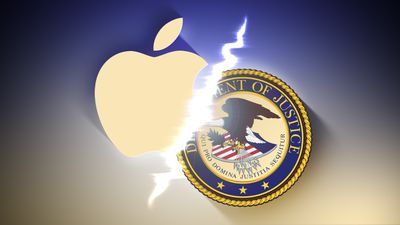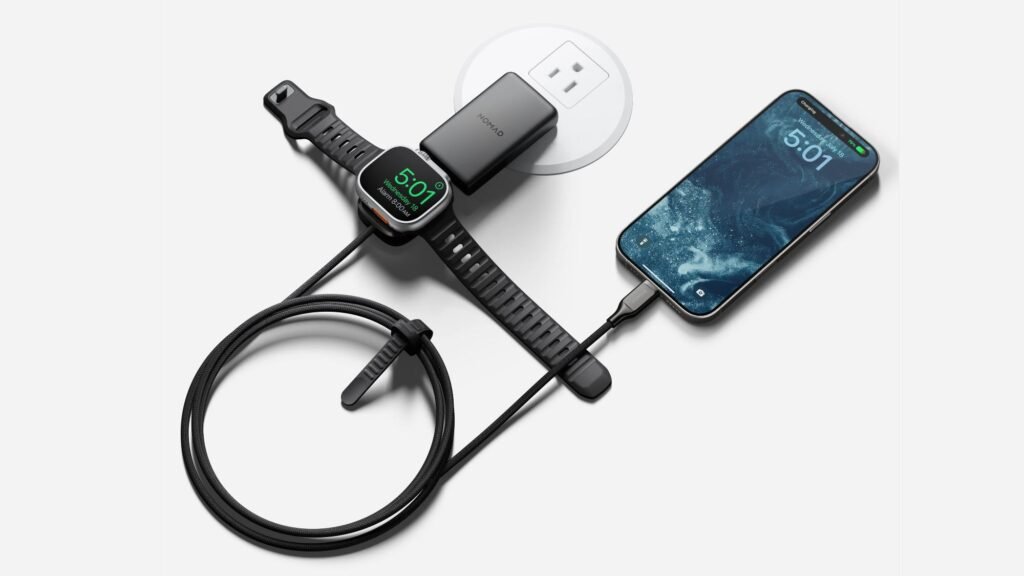by Juli Clover
Apple today filed a motion to dismiss its ongoing lawsuit with the United States Department of Justice, a standard step in the litigation process. In its motion to dismiss, Apple argues that the government’s complaint has not demonstrated anticompetitive conduct, anticompetitive effect that harms consumers, or that Apple is a monopoly power in the U.S. smartphone market. The government needs to prove all three of these claims for a successful antitrust lawsuit.

For the anticompetitive allegation, the DoJ lawsuit focused on third-party access to Apple services and features, but Apple argues that there is longstanding Supreme Court precedent that companies can set the terms and conditions of their third-party dealings. Apple claims that the DoJ is attempting to force it to spend money to develop tools for big business competitors, which could have a “chilling” effect on innovation. The DoJ suggested, for example, that Apple should have developed an iMessage app for Android.
iMessage is Apple’s proprietary, innovative messaging service that Apple created to competitively differentiate iPhone. Under the Government’s view, companies like Apple should face antitrust liability for not expending the resources, cost, and time to develop versions of proprietary products and services for competitors’ devices.
Apple points out that the DoJ’s complaint does not explain how Apple’s alleged limiting of “super apps,” cloud streaming apps, digital wallets, messaging apps, and competing smartwatches has harmed consumers or impacted consumer choice about which smartphone to purchase. For a successful antitrust lawsuit, the DoJ needs to prove that Apple’s actions hurt consumers and stifle competition, and the DoJ argues that Apple has “locked” customers into its ecosystem.
It is implausible to claim, as the Government does, that Apple has deterred any customers from switching to Google or Samsung because of its policies with respect to “super apps,” cloud gaming, smartwatches, or anything else. The opposite is much more plausible: Users unhappy with Apple’s reasonable policies on third-party access can and do switch away to competitors’ devices, where those limits do not exist.
Apple argues that it is not a monopolist because it faces competition from companies like Google and Samsung, preventing the government from establishing the “typical hallmarks of monopoly power.” Apple does not have enough U.S. smartphone marketshare to make the monopoly claim easy for the government to establish. The DoJ has compared Apple to Microsoft, but Microsoft had a 95 percent share of the operating system market when it faced an antitrust lawsuit, while Apple’s is closer to 65 percent.
Apple further suggests that the DoJ is aiming to have the court establish a “new theory of antitrust liability” that no prior court has recognized and that would provide “unprecedented authority to control Apple design choices.” Apple says that the DoJ is targeting the very features that distinguish iPhones from competing devices, and if the DoJ ultimately wins the case, courts would need to “oversee product-design and policy choices,” which they are not equipped to do.
A motion to dismiss limits the information that Apple can provide to dispute the DoJ’s claims, and rulings often favor plaintiffs. The allegations that the DoJ made are assumed to be true at this stage, and Apple needs to prove that the claims fail as a matter of law. For this reason, the lawsuit is likely to progress, though claims could be narrowed and there is a chance for dismissal.
If the court rules in the Department of Justice’s favor on the dismissal, there will be many future chances for Apple to sway the court because this is a legal battle that will span years.
After Apple’s motion to dismiss, the government has until September 12 to file an opposition brief. From there, Apple will file a reply brief on October 10, and there could be a possible hearing after that. A ruling on the motion to dismiss is expected in late 2024 or early 2025.
Should the government win, Apple will file an answer to the initial complaint, leading to a discovery period where both parties provide documents, expert testimony, and depositions, which can last for over a year. A summary judgment will follow, which is where Apple can make a stronger case, and that might not happen until 2027. Should the case ultimately go to trial, a trial could take place sometime in 2028, or even later.
For a refresher on the DoJ’s antitrust claims against Apple, we have a dedicated guide that highlights everything you need to know about the U.S. vs. Apple legal fight.
Popular Stories
Apple Releases iOS 17.6 With Bug Fixes and Security Improvements
Monday July 29, 2024 1:11 pm PDT by Juli Clover
Apple today released iOS 17.6 and iPadOS 17.6, the sixth point updates to the iOS 17 and iPadOS 17 operating system updates that came out last year. The iOS and iPadOS 17.6 updates come two months after the debut of iOS 17.5 and iPadOS 17.5. iOS 17.6 and iPadOS 17.6 can be downloaded on eligible iPhones and iPads over-the-air by going to Settings > General > Software Update. Apple has also…
Here Are All of the Apple Intelligence Features in the iOS 18.1 Developer Beta
Monday July 29, 2024 2:11 pm PDT by Juli Clover
Apple today released new betas of iOS 18.1, iPadOS 18.1, and macOS Sequoia 15.1 for developers, introducing the first Apple Intelligence features. Apple Intelligence was previewed in June, and is Apple’s version of artificial intelligence. Not all of the Apple Intelligence features are available as of yet, but we’ve rounded up a list of what’s active in the beta. Note that iOS 18.1, iPadOS…
iPhone 16 Series Is Less Than Two Months Away: Everything We Know
Thursday July 25, 2024 5:43 am PDT by Tim Hardwick
Apple typically releases its new iPhone series around mid-September, which means we are about two months out from the launch of the iPhone 16. Like the iPhone 15 series, this year’s lineup is expected to stick with four models – iPhone 16, iPhone 16 Plus, iPhone 16 Pro, and iPhone 16 Pro Max – although there are plenty of design differences and new features to take into account. To bring …
Apple Releases macOS Sonoma 14.6 With Security Updates
Monday July 29, 2024 1:18 pm PDT by Juli Clover
Apple today released macOS Sonoma 14.6, the sixth update to the macOS Sonoma operating system that launched last year. macOS Sonoma 14.6 comes a little over two months after the release of macOS Sonoma 14.5. The macOS Sonoma 14.6 update can be downloaded for free on all eligible Macs using the Software Update section of System Settings. macOS Sonoma 14.6 includes…




